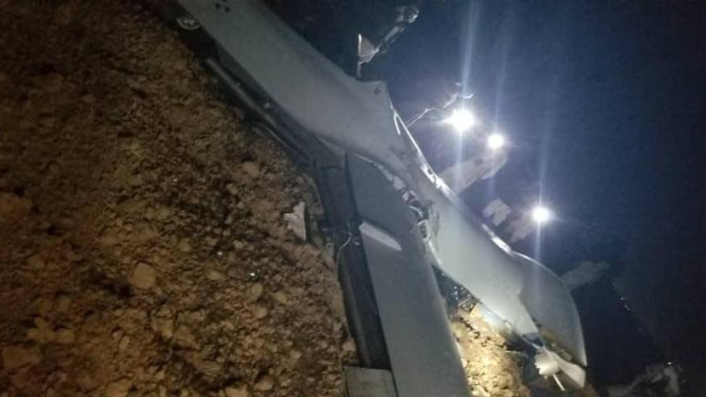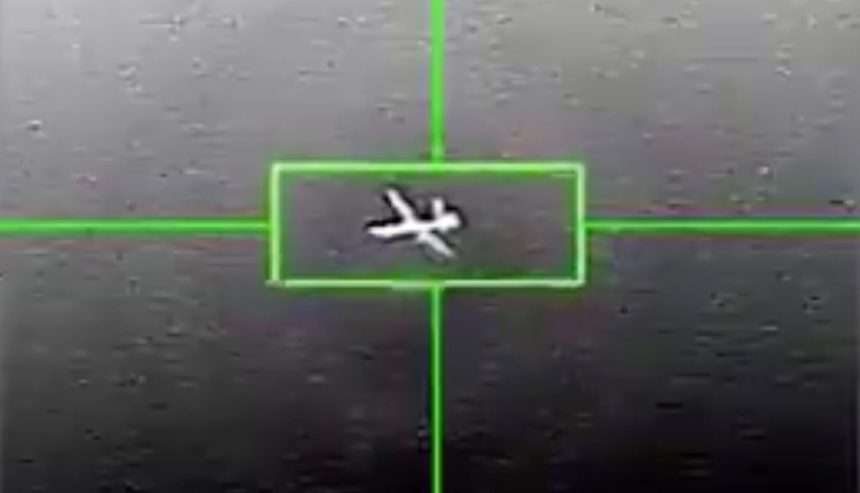This is the fourth U.S. Reaper drone being shot down by the Houthi rebels since October 2023.
Yemen’s Houthi rebels on Friday claimed to have shot down another American MQ-9 Reaper drone, circulating footage of the downed UAV (unmanned aerial vehicle), that served to identify the aircraft. They also released a video of the projectile in action used to bring down the Reaper.
This is the second shoot down of the Reaper by the Yemen-based group, in the previous two months, the last such hit taking place on April 26, 2024. Overall, this also makes it the fourth US drone being shot down since the war in Gaza began in October 2023, with the first brought down in November of that year, followed by another in February.

Previous episodes
The April 26 downing of the Reaper was confirmed by US Air Force’s Lt. Col. Bryon J. McGarry, a DoD (Department of Defense) spokesperson, who said an investigation was underway.
That shootdown saw the Houthis releasing electro-optical footage of the Reaper being captured in its AD (Air Defense) system’s cross hairs, and a missile leaving the launcher in dark conditions. It soon travels a distance and explodes in a fireball, suggesting it has hit its target.
The Houthi movement has published video of them shooting down an American MQ-9 Reaper drone with a surface-to-air missile, showing them using aerial reconnaissance drones of their own to track the American military hardware before taking it out of the sky. pic.twitter.com/rc3lKvlxFo
— Séamus Malekafzali (@Seamus_Malek) April 27, 2024
The interception seems to be happening at within-visual ranges. A subsequent thermal footage capturing the drone from the front also shows the missile hitting it from the side. The group then displays the crashed debris that includes the push-propeller section, the electronic and integrated circuitry and other components.
Jemeńscy 🇾🇪 #Houthi przypominają, że dają radę z 🇺🇸. Znów zestrzelili cenny dron MQ-9 #Reaper. pic.twitter.com/Ph8uMtDUyr
— Krystian Jachacy 🇵🇱 (@KrystianJachacy) May 17, 2024
Latest Downing
Associated Press (AP) quoted Houthi military spokesman Brigadier General Yahya Saree claiming they used a “surface-to-air missile” to bring down the drone as it was “carrying out hostile actions” in Yemen’s Marib Province. The region is held by the Houthis, which is opposed to the internationally recognized government.
The Houthis later released footage they claimed showed the surface-to-air-missile being launched at night, along with footage in thermal vision mode of the drone being captured in its EO/IR cameras. A man, whose voice had been digitally altered, possibly to prevent identification, chanted the Houthi slogan: “God is the greatest; death to America; death to Israel; curse the Jews; victory to Islam.”
Several accounts on X later posted phone camera footage of Houthi fighters and locals surrounding the wreckage of the Reaper. Some analysts claimed that the Houthis used the Iranian Product 358 anti-drone UAV – or loitering SAM it as some observers have classified it – to bring down the Reaper. This aspect is however not yet clear.

Reapers, which cost around $30 million a unit, can fly at altitudes up to 50,000 feet and have an endurance of up to 24 hours before needing to land. The MQ-9 Reaper’s defining features are its sophisticated multi-mode electro-optical sighting system, and communications technology.
It can coordinate with ground and air assets, watching surface movements from a safe altitude and distance. The Raytheon Technologies’ (now RTX) electro-optical Multispectral Targeting System-B (MTS-B) turret that provides real-time intelligence, targeting, and tracking.
Non-State Actor with a Professional Military?
The Houthis’ are significantly technologically superior compared to the last few adversaries the US fought, like Al Qaeda or the Taliban. Possessing an array of older, legacy air defense (AD) missiles, cheap yet effective Iranian drones that are usually shipped in disassembled forms, and some relatively advanced series of missiles and UAVs, the Houthis survived the combined military might of the Kingdom of Saudi Arabia (KSA) and the United Arab Emirates (UAE) in the eight-year-long civil war.
The group reportedly shot down Royal Saudi Air Force (RSAF), Yemeni, Emirati, Sudanese, Bahraini, Jordanian and Moroccan jets including AH-64 Apaches, Su-22s, MiG-29s, F-16s and several American MQ-9 Reaper drones. What missile the Houthis used to bring down the latest Reapers is not known. But Western analysts have drawn some studied inferences.
Besides Iran being the “key source for Houthi anti-ship missile technology,” it has a “few obsolescent Soviet-era systems and slightly less antiquated Chinese designs,” according to a January 4 report by the International Institute of Strategic Studies (IISS).
The report names the S-75 Dvina surface-to-air missile, acquired from pre-war Yemeni army stocks, that it has converted for anti-ship roles using an Iranian conversion kit. Assuming the missile can still engage aerial targets even after the conversion, it can significantly threaten slow-moving, vulnerable drones.
Thus whether it is the S-75 Dvina or the Iranian Product 358, it is now likely that the US would possibly reevaluate tactics and SOPs (Standard Operating Procedures) of flying the Reapers over/near Yemen, as the airspace is certainly becoming contested for ISR drones.









